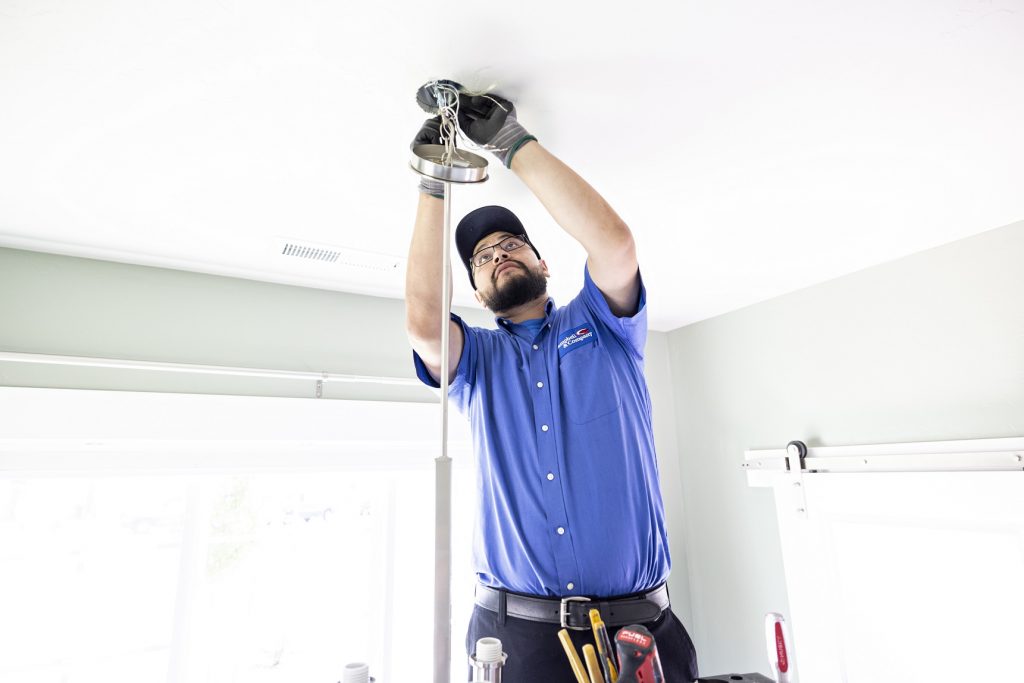
Whether you’re thinking about buying an older home for its historic charm or already residing in one, chances are your place could use some love in the plumbing department. Old homes are renowned for their quirks, and hidden plumbing problems are especially common in homes built in the 1980s.
5 Plumbing Problems To Check for in an Older Home
Some plumbing problems might be apparent during your home inspection, while others can be more difficult to detect. Here are the five most common plumbing problems that homeowners can expect from a property built in the 1980s:
1. Corroded Pipes
Many homes built before the '90s contain pipe materials that are no longer in use due to their susceptibility to corrosion. If your home was built a long time ago, it could contain pipes made from vulnerable materials such as:
- Lead: Not only are lead pipes more likely to corrode, but lead is a highly toxic material that can contaminate your drinking water.
- Galvanized steel: Popular in homes built before the '60s, galvanized steel pipes have a protective zinc coating that erodes over time, causing pipe corrosion.
- Polybutylene: These plastic piping solutions react chemically with oxidants in public water systems, resulting in flaking and cracking systems.
Allowing pipe corrosion to go untreated can result in more serious plumbing catastrophes. Be on the lookout for the following signs that indicate your pipes may be corroded:
- Discolored water coming from pipes
- Discoloration on pipes beneath sinks or in basements
- Water meter runs when water is not in use
- Sudden, unexplained increase in water expenses
- Sagging carpeting or flooring
If your pipes are corroded due to outdated materials, it may be necessary to replace all of your supply lines. Contact a plumber the moment you recognize any signs of corrosion impacting your system.
2. Pipe Bellies

Pipes that are installed beneath the home are more susceptible to shifting soil, which can create negative slopes known as pipe bellies. These can restrict water flow, cause severe leaks, and lead to pooling wastewater and sediment.
Since water mains are pressurized, bellies aren’t as much of a concern for this part of your system, but they are problematic for main drains. The bellies hold water, and their lowest points create an ideal location for waste to collect and clog your system. They can also attract nearby tree roots due to the standing water, leading to tree root infiltration.
3. Sewer Failures
Failing sewer lines are common in older homes, causing sewage backup into your property. Since modern appliances force more water through sewer lines, it’s common for sewer line failures to occur after major remodels.
Ignoring a sewer line failure can come at the detriment of your plumbing system’s health and your personal health. That’s why it’s important to know what signs indicate a possible failure with your sewer line, including:
- Wastewater backup into your home
- Foul odors coming from pipes and drains
- Multiple slow-moving drains
- Unexplained puddles or soft spots in the yard despite dry weather
Sewer line replacements are never ideal, but they don’t always mean having to dig up your yard. Trenchless sewer line replacement is a technique that requires less labor and risk of landscaping damage and may be an option when your lines are still largely intact. Consult with a professional plumber to have your sewer lines assessed for trenchless replacement.
4. Outdated Fixtures
Antique fixtures and faucets are what give older homes their historic charm. Unfortunately, a vintage aesthetic may come at the expense of reliable functionality. Wear and tear on fixtures can lead to leaks, low water pressure, and other plumbing problems that make using water inconvenient.
Short-sighted homeowners might be okay with these minor inconveniences, but over time, these small-scale problems will become much larger, more expensive issues. It’s important to replace broken, leaking, poorly pressurized systems early to prevent costlier issues down the road.
5. Improper Repairs
Unless you’re the first or second owner with a fully documented record of all plumbing maintenance and repairs, it’s likely your old home’s plumbing has a checkered history. While you might be diligent about your plumbing service needs, previous owners might not have been. There’s no telling what kind of DIY plumbing repairs or unqualified handymen might have worked on your system.
From unsecured pipes and improper fixture installations, a lot can go wrong with an older home that’s relied on subpar plumbing repairs. The best way to correct these problems is by working with a licensed, professional plumber.
Choose Campbell & Company for Quality Plumbing Services
Older homes have unique plumbing demands, so you need a qualified team of plumbers to address any issues that arise. Campbell & Company has provided top-quality plumbing services in Yakima and the Tri-Cities since 1983. We are fully licensed and insured, highly rated, and experienced, so you can trust us to do it right!
Is your older home suffering from these common plumbing problems? Contact Campbell & Company at (509) 412-3146 to request plumbing replacement or repair services today.



